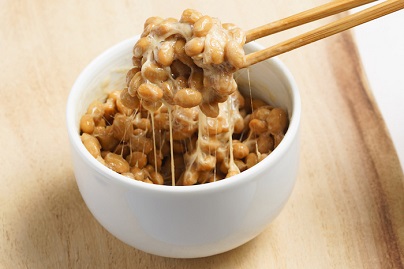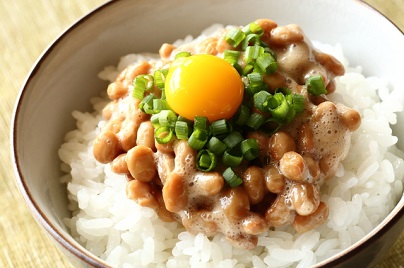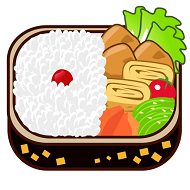Natto
Nattō is a traditional Japanese food made from soybeans fermented with Bacillus subtilis var. natto. It is usually eaten as a breakfast food. It is normally served with soy sauce, karashi mustard and Japanese bunching onion. Nattō may be an acquired taste because of its powerful smell, strong flavor, and slimy texture. Stirring natto produces a lots of stricky strings. In Japan, nattō is most popular in the eastern regions, including Kantō, Tōhoku, and Hokkaido.
Natto has a different nutritional makeup from raw soy beans, losing Vitamin A and several other vitamins and minerals. The calorie content of natto is lower than that of raw soy beans, however. While soy beans are highly nutritious, the nutrition is packed in the bean's hard fiber. Natto includes the benefits of nutritious soy and softer dietary fiber without the high sodium content present in many other soy products, notably in miso. Natto contains no cholesterol and is a significant source of iron, calcium, magnesium, protein, potassium, vitamins B6, B2, E, K2, and more. When Natto is mixed with egg and eaten with rice, Japanese call the dish a perfectly nutritious meal, covering all nutritional needs. Natto is the richest food source of natural K2. Consumption of it is strongly associated with bone health.

Ingredients
- Natto package
- Green Onions
- Egg
- Rice
- Soy Sauce

Instructions
- Cook rice in the rice cooker.
- Open a natto package and mix the seasoning sauce and the mustard that is included. Then stir until sticky strings are formed. They should look thick and gooey.
- Transfer the natto on top of the rice.
- Dice green onions and put them on top.
- Drizzle a little bit of soy sauce on top.
- Put a raw egg on top. Then mix and enjoy.




